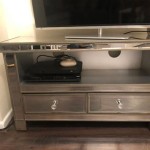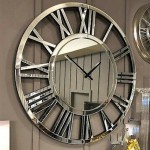Can You Mirror iPad to TV Without Wifi?
Mirroring an iPad screen to a television typically relies on a shared Wifi network. This connection allows for seamless communication between the two devices, enabling users to stream videos, display presentations, and enjoy other content on a larger screen. However, there are situations where a Wifi network might not be available or accessible. This raises the question: can iPad screens be mirrored to TVs without Wifi?
The answer is yes, though the methods available are generally more hardware-dependent than Wifi-based mirroring. These alternative methods involve physical connections between the iPad and the television, utilizing cables and adapters to establish a direct link. While perhaps not as convenient as wireless mirroring, these wired connections offer a reliable and stable solution, particularly in environments where Wifi is unavailable or unreliable.
Wired Mirroring Options for iPads
Several wired options facilitate screen mirroring from an iPad to a TV without relying on a Wifi connection. The most common methods utilize adapters designed to connect the iPad's charging port to the TV's input ports, such as HDMI.
Apple's Digital AV Adapter: Apple offers its own proprietary Digital AV Adapter. This adapter connects to the iPad's Lightning port and provides an HDMI output to connect to the TV. Users simply connect an HDMI cable from the adapter to the TV's HDMI input. This method supports mirroring of the iPad's display, including apps, videos, and presentations.
USB-C Digital AV Multiport Adapter (for iPads with USB-C): For iPads equipped with a USB-C port, Apple also offers a USB-C Digital AV Multiport Adapter. This adapter functions similarly to the Lightning Digital AV Adapter, providing an HDMI output for connection to the TV. It also includes additional ports for connecting other devices, such as USB drives or power adapters, for added versatility.
Third-Party Adapters: Numerous third-party manufacturers offer HDMI adapters designed for iPads. These adapters typically function similarly to Apple's official adapters, connecting to the iPad's Lightning or USB-C port and providing an HDMI output. However, it's important to research and choose reputable brands to ensure compatibility and performance. Quality can vary significantly, so reading reviews and verifying compatibility with the specific iPad model is crucial.
Using Wired Connections for Mirroring
The process for mirroring an iPad to a TV using a wired connection is generally straightforward. First, connect the appropriate adapter to the iPad's charging port (Lightning or USB-C). Then, connect an HDMI cable from the adapter to an available HDMI port on the television. Finally, switch the TV's input source to the corresponding HDMI port. The iPad's screen should then be mirrored on the television.
Resolution and audio are typically handled automatically, with the adapter and TV negotiating the optimal settings. However, users may need to adjust settings on the iPad or TV in some cases, such as selecting the correct audio output device.
Advantages of Wired Mirroring
Wired mirroring offers several advantages over wireless methods. The connection is generally more stable and less susceptible to interference, resulting in a smoother viewing experience. Latency is also typically lower with wired connections, which is beneficial for activities like gaming or interactive presentations where responsiveness is crucial.
Additionally, wired mirroring doesn't require a Wifi network, making it a viable solution in environments where Wifi is unavailable or unreliable. This is particularly advantageous for presentations in conference rooms or classrooms where network access may be limited or restricted.
Considerations for Wired Mirroring
While wired mirroring offers advantages, there are also considerations to keep in mind. The primary limitation is the physical cable connecting the iPad to the TV, which can restrict movement and placement. The length of the HDMI cable dictates the distance between the devices, which can be inconvenient in some situations.
The cost of adapters can also be a factor, especially for Apple's official adapters. Third-party options are often more budget-friendly, but it's crucial to ensure compatibility and quality before purchasing.
Finally, ensuring the TV and iPad are compatible with the chosen adapter is essential. Checking the specifications of both devices and the adapter will prevent compatibility issues and ensure a seamless mirroring experience.
In conclusion, while Wifi offers a convenient method for screen mirroring, wired connections provide a reliable and stable alternative when Wifi is unavailable or impractical. Understanding the available wired options and their respective advantages and limitations allows users to choose the best solution for their specific needs.

Simple Ways To Mirror Iphone Tv Without Wifi 6 Steps

How To Use Airplay Apple Tv Without Wi Fi Full Guide

How To Use Airplay Apple Tv Without Wi Fi Full Guide

Can You Screen Mirror Without Wi Fi 2024 Answered

Simple Ways To Mirror Iphone Tv Without Wifi 6 Steps

How To Screen Mirror Without Wifi 2024 Updated

2024 Tutorial How To Mirror Phone Tv Without Wi Fi

Simple Ways To Mirror Iphone Tv Without Wifi 6 Steps

How To Cast Any Smart Tv Without Wifi Airdroid

4 Simple Ways To Mirror Phone Screen Without Wifi








